What’s the role and impact of AI in construction? What opportunities and challenges will it present?
To start to answer that question, you must consider the big, transformative trend that is driving forward the future of the industry overall – what I’ve come to call “Methodology Modification.” It doesn’t sound very exciting, but is actually a massive trend, and it’s part of my BIG Future megatrends series. Read more over at the post.
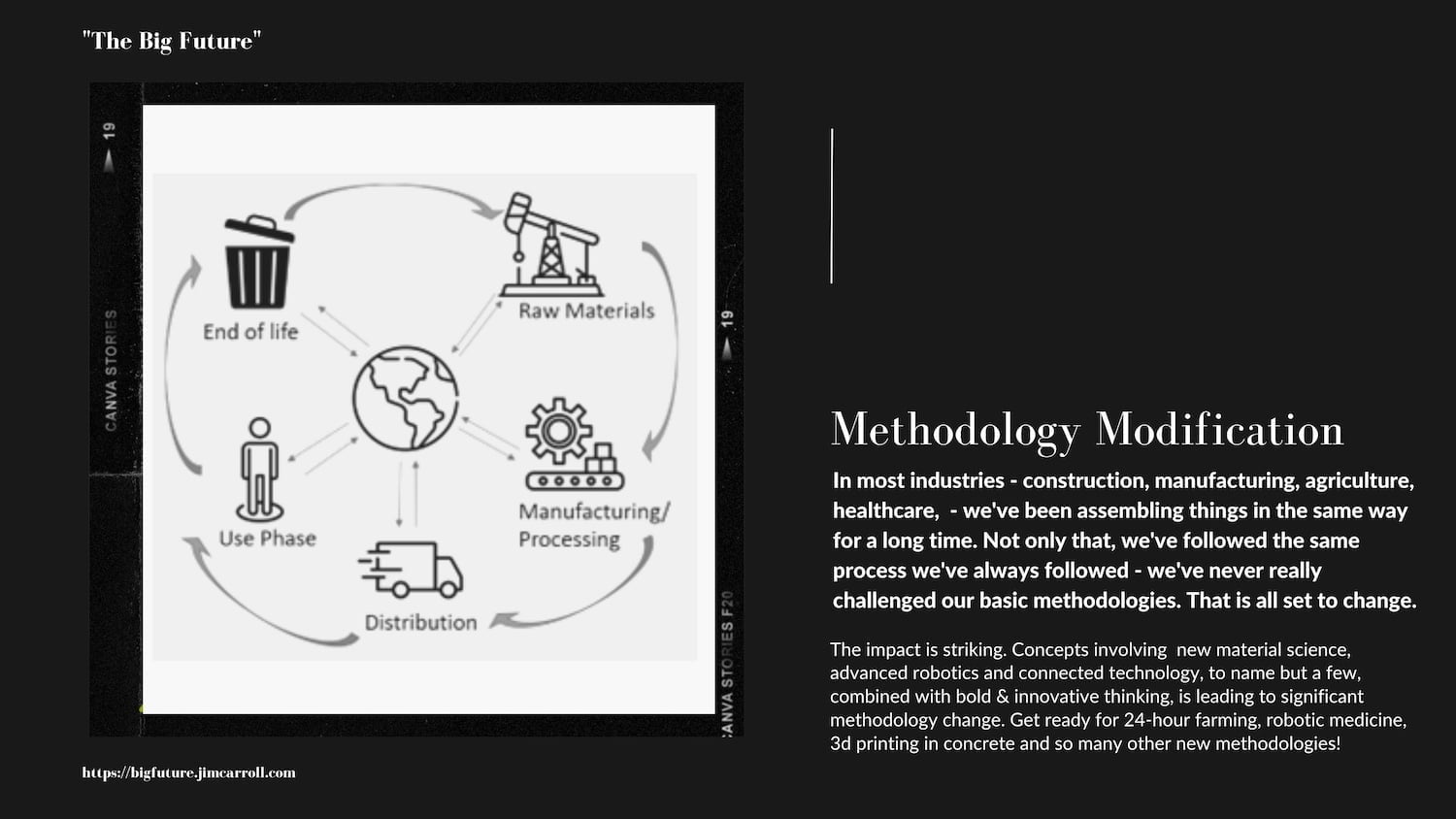
Consider,for example, what this means in the world of construction.
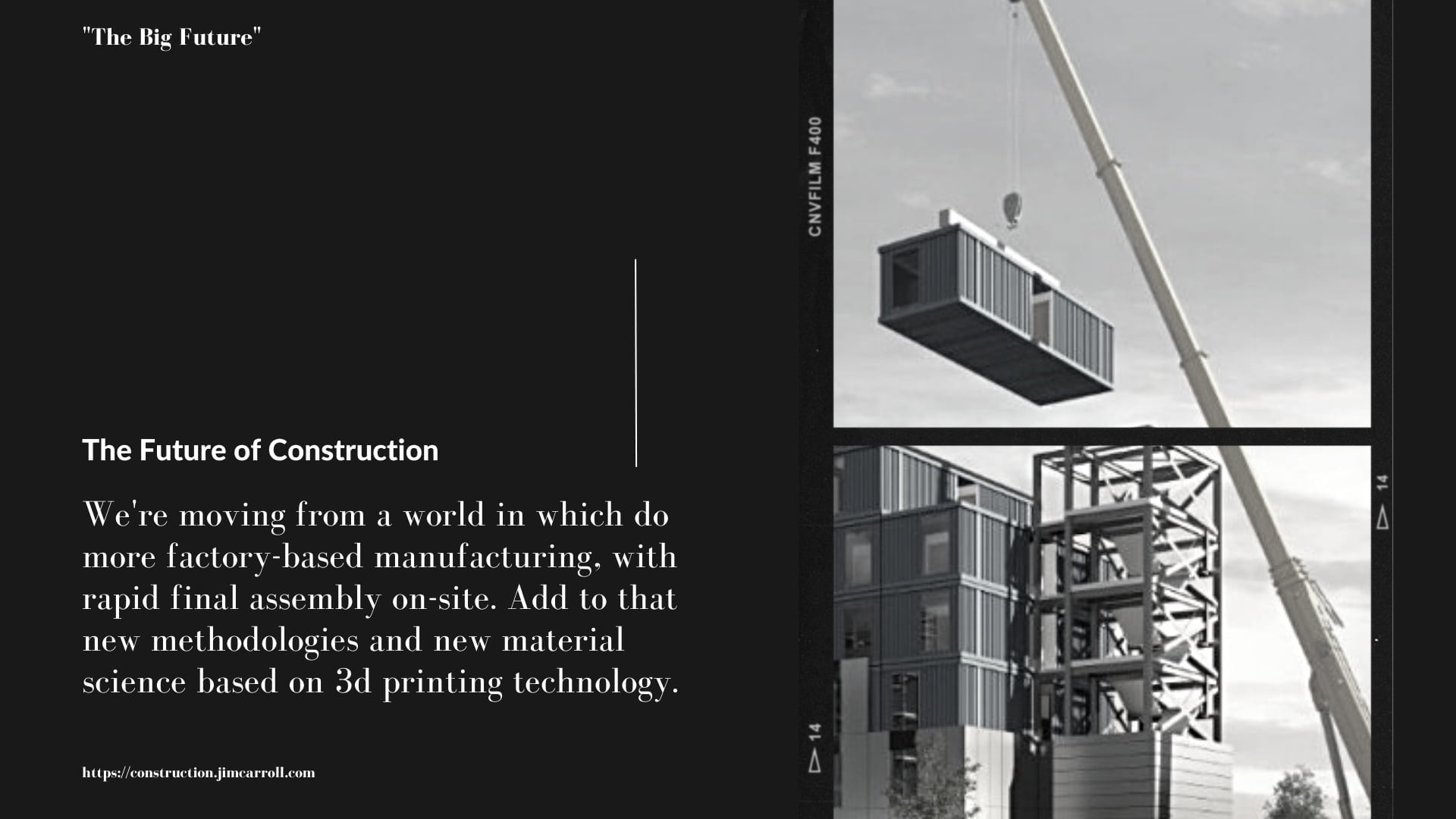
Quite simply, the way we do things in construction is changing, and AI is going to play a huge role.
To underestand that, revisit an article I wrote a few years ago for the leading construction magazine in the United Arab Emirates. Here’s an extract.
AI and Robotics In Construction – Massively Transformative
In an exclusive article for Gulf Construction, JIM CARROLL, futurist, trends and innovation expert, highlights the far-reaching impact of artificial intelligence on the construction industry.
Gulf Construction News, January 2019 (link)
Artificial intelligence (AI), the very phrase conjures up images of futuristic mechanical brains doing all kinds of intelligent work. Scare stories abound – AI and robots are going to take away all of our jobs! Science fiction scenarios paint a picture of enslaved humans being subjected to the evil whims of smart computer technology.
What’s driving the push for AI in the construction sector? Ongoing labour shortages due to a hot global economy is certainly one of the key issues. The marriage of robotics has been a pathway to dealing with this challenge, but the marriage of AI to robotics take us to the next step in this complex voyage. In addition, it’s simply the next step in the digitisation of the industry. As we go down the technology path, we follow its inevitable result.
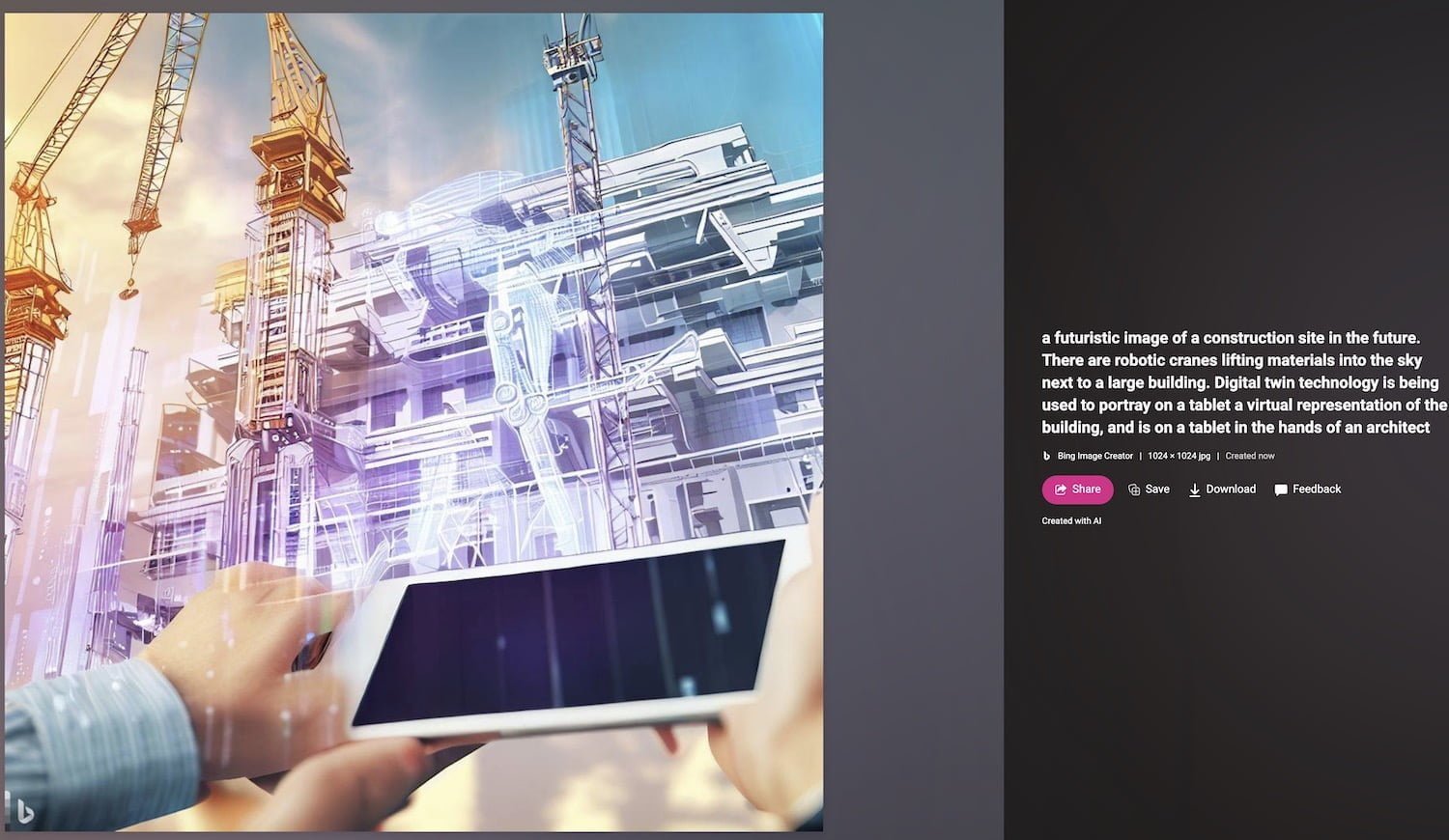
So let’s put into perspective what’s been happening, and where AI fits in.
Digitisation of PM
As in many other industries, the construction sector has already been on a path to digitisation with the acceleration of technology. Computer-aided design (CAD) and building information modelling (BIM) concepts have accelerated the design and build process, but these have been but baby steps in a complex voyage.
AI takes us into a world in which we can apply automated, intelligent routines in the many calculations, assumptions, testing and analysis of the ideas we are using in the architecture and design process, as well as detailing the methodologies that will be used to put those designs into actionable steps.
Consider, for example, what we have been doing with efforts involving the digitisation of the project management (PM) process. We need to carefully manage the ordering and procurement, fabrication and assembly of millions of individual components, and manage extremely complex projects. What if we could automate some of this, kick out the exceptions for analysis, and ignore the rest?
Some companies are already exploring this idea. Canada’s Fluor Corp is working with IBM’s Watson AI system to explore how to take existing digitised projects and analyse the data within for insight on rising costs, schedule delays, supply chain problems, or errors in estimates, forecasts and project risks. Consider it BIM on steroids!
Robotic methodologies
It’s when we marry AI concepts with robotics that things become really interesting in the construction sector. Robotics is already making its way felt in the sector in a very significant way.

We have been busy automating the building process itself. Certainly, the entire process of the automation of the construction process has been moving quickly within the residential sector.
The UK-based Legal & General, for instance, has been aggressively working to disrupt the business of home construction through the ability to manufacture homes on high-tech production lines that when completed, are ready to live in, with carpets, curtains and white goods already in place. What they are really doing is disrupting the concept of construction by moving away from building in sites with blocks, to building utilizing robots in factories with subsequent assembly on site.
This isn’t just ‘pre-fab’; it’s the arrival of disruptive methodologies.
And therein lies the rub. Much of this construction process involves a regular series of iterative processes, repeated over and over again. If we can automate this with some type of intelligent process management capability, and then examine the quality of our work, we have achieved something of significance – and that is where AI is taking us to. As in project management, we utilise AI to provide for better automation of the process, and examine the exceptions.
These new methodologies will be driven by the fact that they provide significant productivity gains. In Australia, Fastbrick Robotics has developed technology that can build a home in three days using a sophisticated, automated bricklaying system – forever changing the way the industry operates.
Other companies around the world are working on similarly sophisticated methodologies, and it is inevitable that these advances will leak into the industrial and commercial construction space.
Smart buildings
Last but not least, the arrival of intelligent, smart buildings concepts will accelerate opportunities for AI.
We are at early days yet when it comes to the concept of smart buildings. Yet the Internet of Things (IoT) is already having a significant impact on how we manage, deploy, operate and monitor various aspects of our facilities such as energy usage.
Once we add machine learning and AI to the mix, we will be able to streamline those activities even more.
Consider, for example, the concept of predictive diagnostics; the ability to determine in advance when a particular part of component is going to break down, and doing preventative maintenance to avoid the downtime that comes with it. Automotive and trucking companies, as well as medical device companies and jet engine manufacturers, have been implementing predictive diagnostics for quite some time.
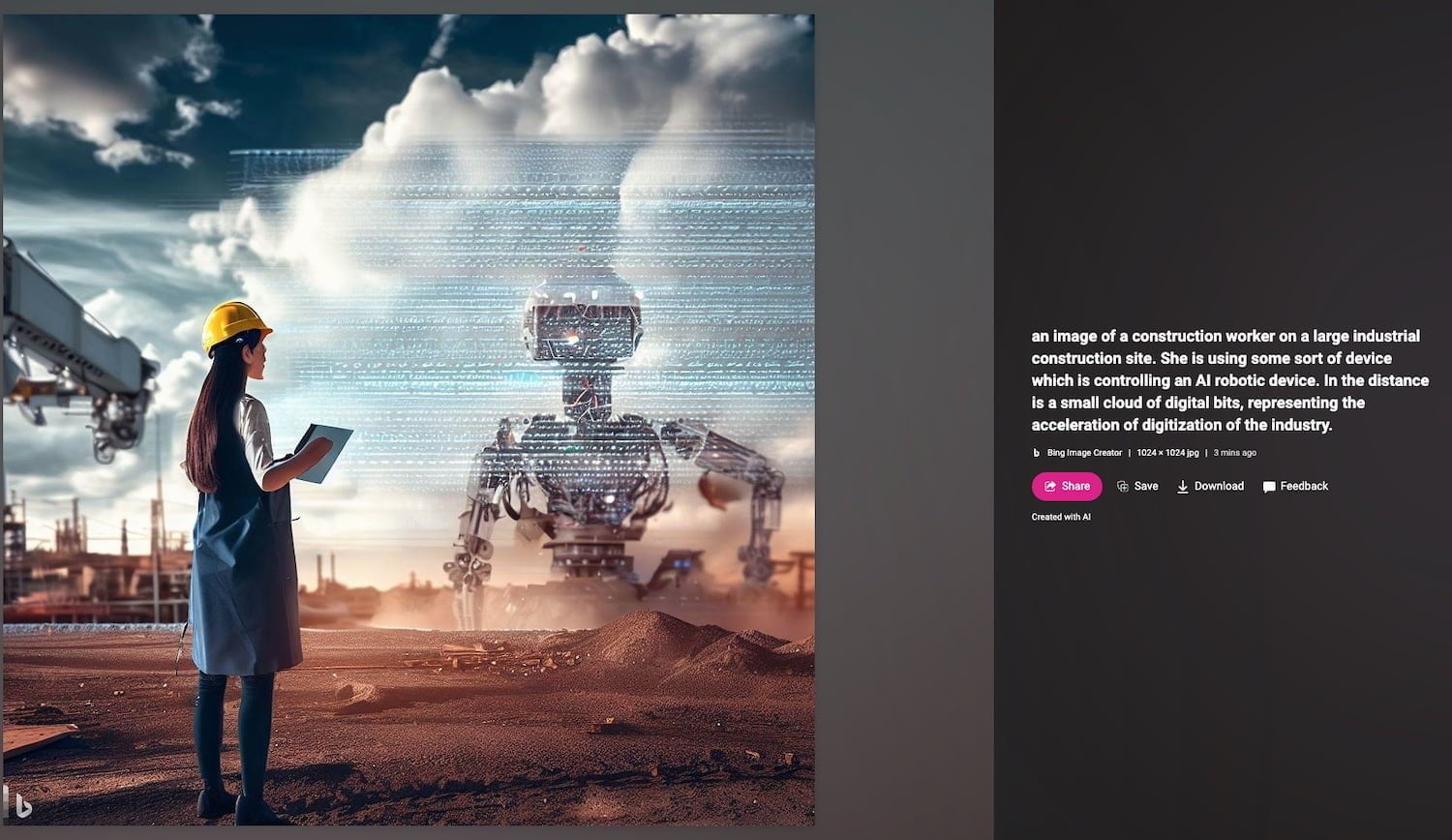
And it’s now coming with rapid developments with IoT in HVAC and energy systems, security infrastructure and other aspects of smart buildings. If we enhance our ability to interpret and analyse the vast amounts of information coming from our intelligent building subsystems, we can reduce downtime and problems even further.
That gives you a sense of some of the AI Megatrends which are already underway. And now, in the era of acceleration, consider where it is going to take us.
- Estimation and Design. AI has already helped to improve design, bidding, and financing by analyzing vast amounts of internal and external data to provide insights from previous projects, such as layout optimization, cost estimates, timeline predictions and risk analysis.
- Enhance quality performance and customer satisfaction by providing real-time insights for negotiating with suppliers, organizing tasks, and predicting risks, such as on-site measurements, input optimization algorithms, and real-time models for unforeseeable events.
- Operations and asset management by using sensors, drones and computer vision to monitor the performance and condition of assets, such as bridges, roads and buildings, and to detect defects, anomalies, and maintenance needs. My 29-year-old son is building a ‘drone air-force’ for a commercial building company that does exactly this!
- Business model disruption and transformation. The future is all abot big and bold ideas, and AI is helpign to reinvent business models and transform the industry by enabling new forms of collaboration, innovation and value creation, such as digital twins, smart contracts and blockchain.
- Safety and security innovation. We are seeing the emergence of new forms of n real-time data that si generated by construction work wearables, such as helmets, vests and gloves, to prevent accidents and injuries.
- Streamlining project management. Algorithms are being used to reduce cost inefficiencies and project delays by using machine learning models to forecast demand, supply and prices of materials, labor and equipment.
- Quality and job inspection. There are a lot of tools including computer vision and image recognition algorithms that are being used to compare design plans with actual outcomes and to identify errors or deviations from plan
- Decision making tools. AI is actively being used to support decision-making and problem-solving through automated planning and scheduling algorithms to provide recommendations, alternatives and solutions for complex issues – which dominate anything having to do with construction and infrastructure!
- Sustainability initiatives – AI is helping us understand issues related to reducing waste, energy consumption and carbon emissions. The whole ‘smart building trend’ has a massive impact in this area, and much of what we do from intelligent HVAC and other tools relies on forms of AI.
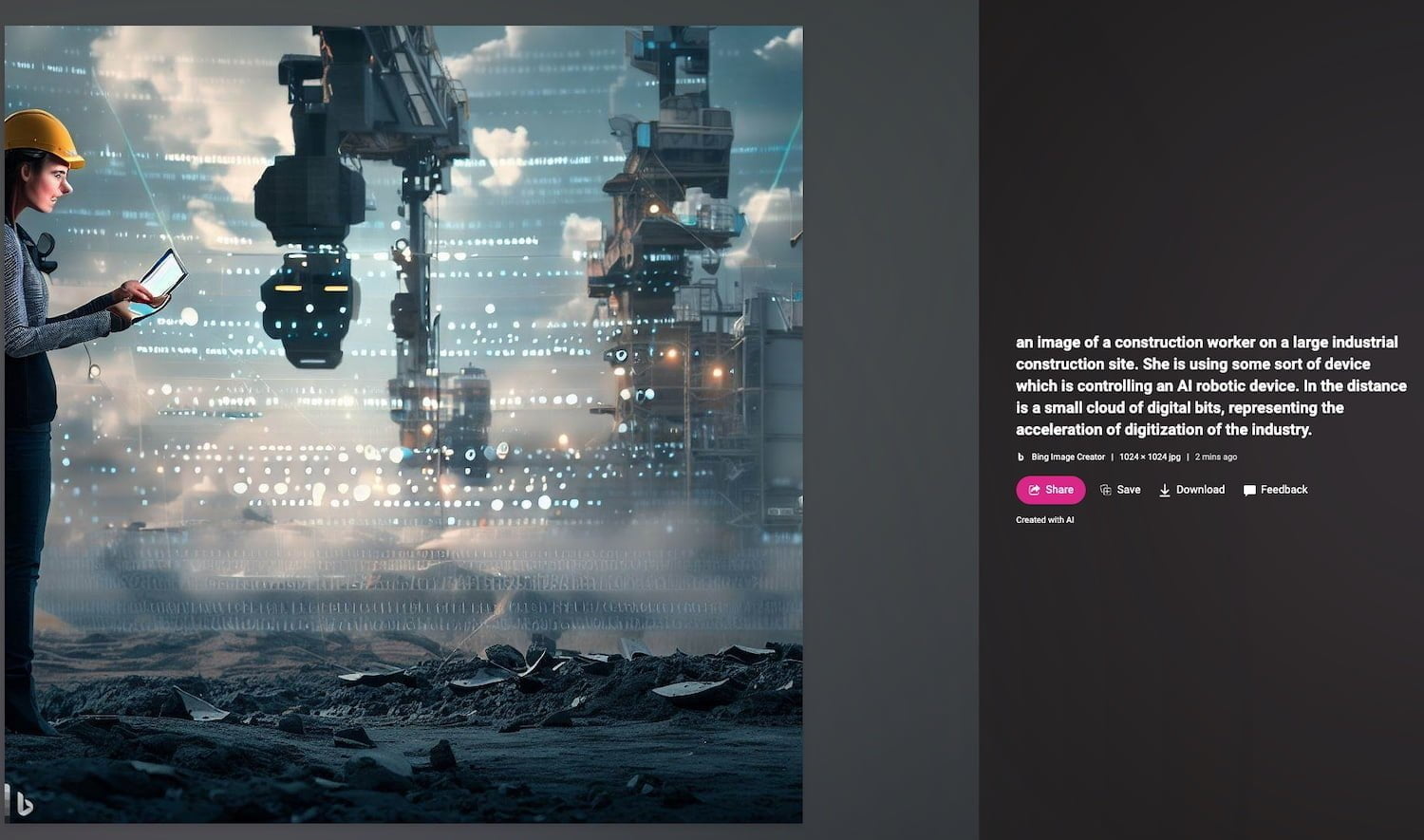
Where does this go in the future? An even bigger role! I asked Microsoft’s Bing!
- AI will enable more constellations of connected solutions around established use cases, such as 3-D printing, modularization, robotics, digital twin technology, AI and analytics, and supply chain optimization and marketplaces
- AI will attract more investment and innovation from both established players and new entrants, creating a more competitive and dynamic market for technology solutions
- AI will expand to cover more use cases across the entire asset life cycle, from concept and feasibility to design and engineering, pre-construction, construction, and operations and maintenance1.
- AI will help to streamline design through predictive AI that can generate optimal designs based on user preferences, site conditions, budget constraints and sustainability goals.
- AI will help to improve construction productivity and quality by using smart robotics, computer vision, image recognition and automated planning and scheduling to perform tasks faster, safer and more accurately.
- AI will help to enhance operations and asset management by using digital twins, sensors, drones and AIoT to monitor the performance and condition of assets, detect defects, anomalies and maintenance needs, and optimize energy efficiency.
- AI will help to reinvent business models and transform the industry by enabling new forms of collaboration, innovation and value creation, such as digital twins, smart contracts, blockchain, 4D printing and cloud VR/AR.
- AI will help to achieve sustainability goals by using optimization algorithms, simulation models and data analytics to reduce waste, energy consumption and carbon emissions.
- AI is poised to revolutionize the construction and infrastructure industries in the coming years. It will create new opportunities for value creation, efficiency improvement and risk mitigation. However, it will also require new skills, capabilities and mindsets from the industry stakeholders.
The thing is, all of this will have a significant impact on the individuals who work within and around the construction industries. Everything will change – the level of knowledge required to do any sort of construction job, new demands for continuous learning of those new skills, acceleration the need for project collaboration, fast-moving developments with safety technologies (smart clothing with sensors, heads-up displays), and a lot more!
So while ChatGPT will lead to a new era of personalized smart knowledge butlers and so much more, there is also so much more going on!




GET IN TOUCH
Jim's Facebook page
You'll find Jim's latest videos on Youtube
Mastodon. What's on Jim's mind? Check his feed!
LinkedIn - reach out to Jim for a professional connection!
Flickr! Get inspired! A massive archive of all of Jim's daily inspirational quotes!
Instagram - the home for Jim's motivational mind!